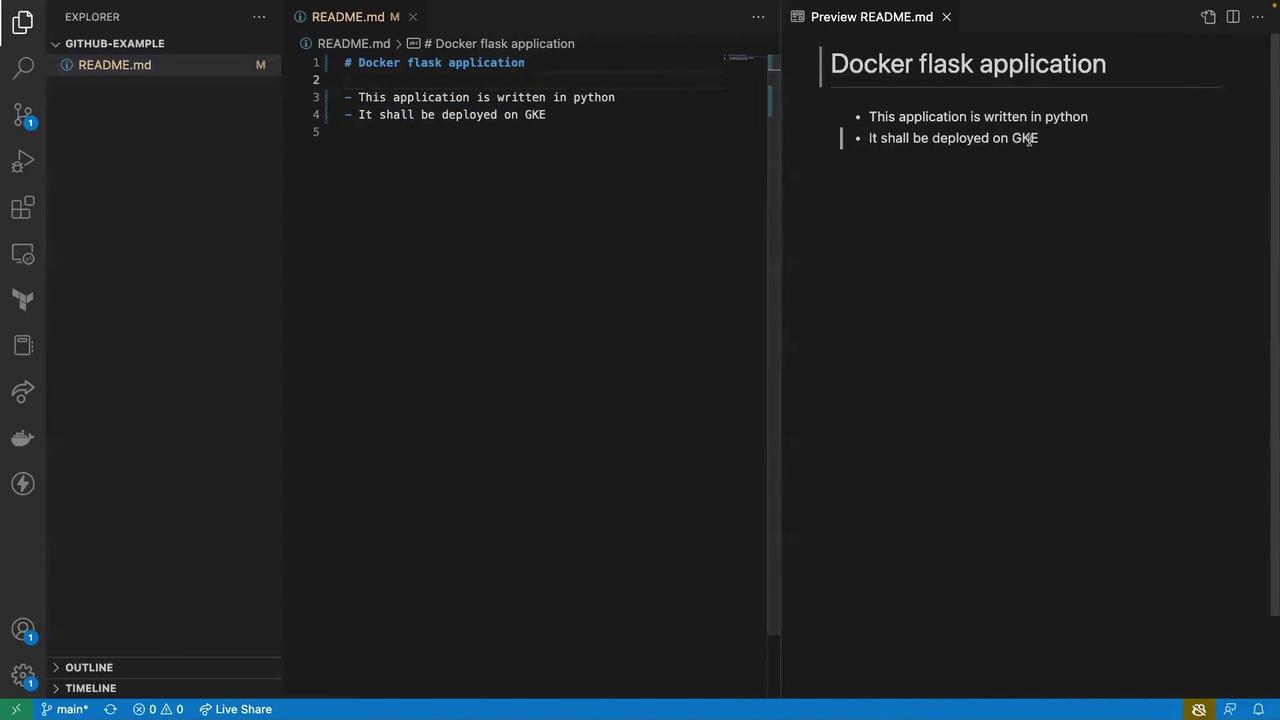GCP DevOps Project
Sprint 01
Task 4 Coding our application locally
Welcome back! In this task, we’ll set up and test our Flask application on your local machine before pushing it to our GitHub repository. We’ll use VS Code for development, write the application code, declare dependencies, and containerize with Docker.
Prerequisites
- VS Code: https://code.visualstudio.com
- Python 3.8+
- Docker installed locally
- Git configured for your project
1. Update the README
Open README.md in VS Code and add a clear project title and description:
A simple Python Flask application containerized with Docker.
This app will later be deployed on Google Kubernetes Engine (GKE).
Use VS Code’s Markdown Preview (⌘+Shift+V / Ctrl+Shift+V) to verify formatting.

2. Project File Structure
| File | Purpose |
|---|---|
| README.md | Overview and setup instructions |
| app.py | Flask application entrypoint |
| requirements.txt | Python dependencies |
| Dockerfile | Docker container build instructions |
3. Create the Flask Application
Create app.py at the project root with the following code:
from flask import Flask
app = Flask(__name__)
@app.route('/')
def hello_world():
return 'Hello, Simple Flask application'
This defines a basic web server with one route (/) that returns a greeting.
4. Specify Dependencies
In requirements.txt, list your Python packages:
Flask
This tells pip which libraries to install inside the container.
5. Write the Dockerfile
Create Dockerfile and add:
FROM python:3.8-slim-buster
WORKDIR /app
COPY requirements.txt requirements.txt
RUN pip3 install --no-cache-dir -r requirements.txt
COPY . .
CMD ["python3", "-m", "flask", "run", "--host=0.0.0.0"]
Key steps:
- Use a lightweight Python base image
- Copy and install dependencies
- Copy application code
- Expose Flask on all network interfaces
Note
If Flask does not auto-detect app.py, you can set the environment variable:
ENV FLASK_APP=app.py
or change the CMD to:
CMD ["python3", "app.py"]
Next Steps
With your files in place (README.md, app.py, requirements.txt, Dockerfile), you’re ready to build and run the Docker image locally:
docker build -t flask-app:local .
docker run -p 5000:5000 flask-app:local
Visit http://localhost:5000 to verify the “Hello, Simple Flask application” message.
Links and References
Watch Video
Watch video content